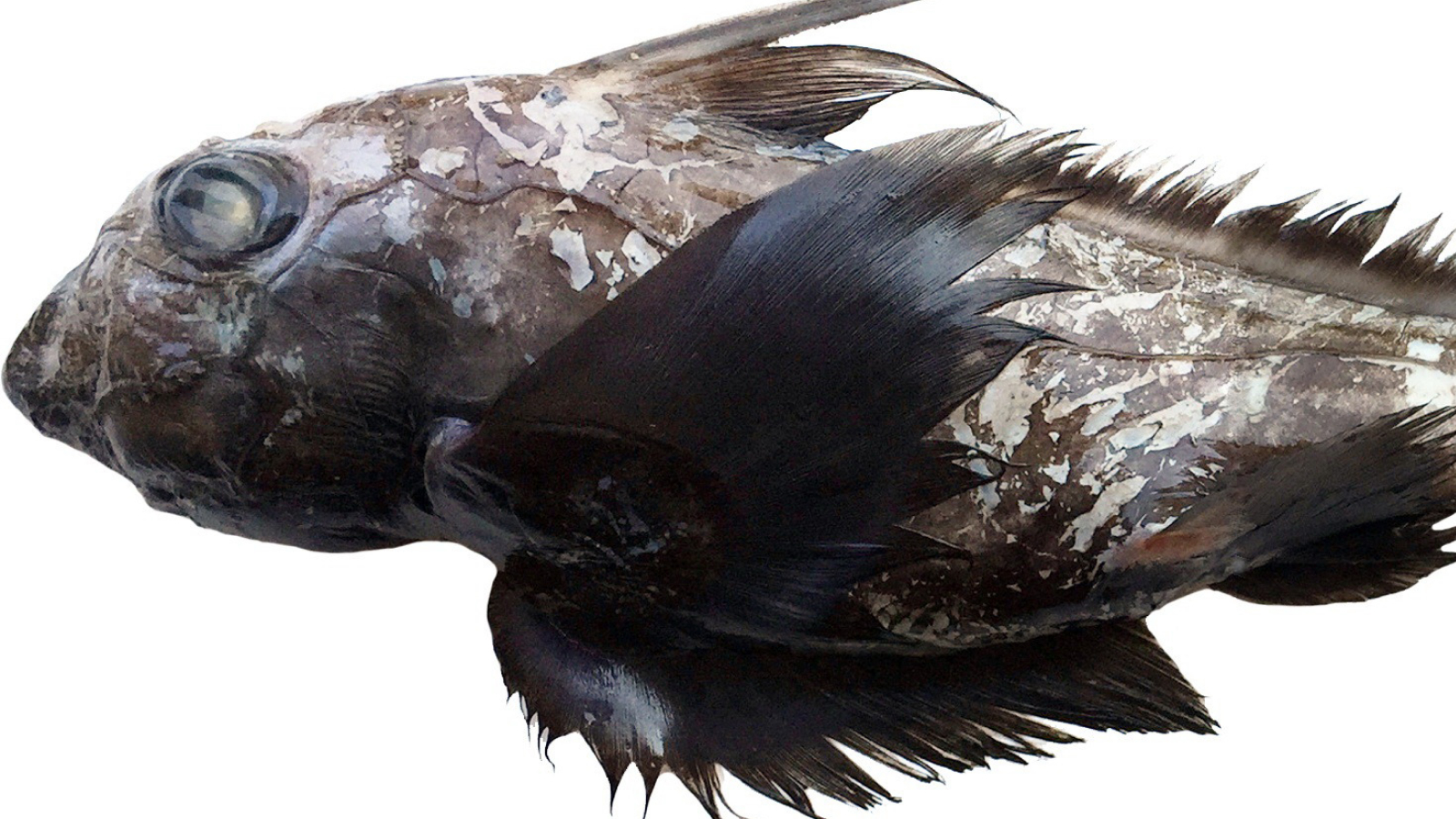
(Image credit: David A. Ebert)
Scientists have discovered a never-before-seen species of “ghost shark” with a massive head, giant, iridescent eyes and feathery fins in the depths of the Andaman Sea off the coast of Thailand.
The elusive deep-sea creature, named Chimaera supapae, is a cartilaginous fish in the order of the oldest fishes alive today, Chimaeriformes. These ancient fish are distant relatives of sharks and rays.
Scientists described the discovery in a paper published March 6 in the journal Raffles Bulletin of Zoology.
“Chimaera are rare in this region of the world,” David Ebert, lead author of the study and program director of the Pacific Shark Research Center at San Jose State University in California, told Live Science in an email.
Chimaeras inhabit the continental slopes and ocean ridges of the deep sea. Found at depths below 1,640 feet (500 meters), these ghostly individuals lurk in dark waters, feeding on bottom-dwelling animals such as crustaceans, mollusks and worms.

“There were only 53 known species of chimaera in the world; this makes 54,” Ebert said. Their deep-sea nature makes them difficult to find, especially in the Andaman Sea, where depths in some areas exceed 14,500 feet (4,400 m).
The common names of chimaera— ghost shark and ratfish — come from their big, reflective eyes and rat-like, tapered bodies. Some species can grow up to 6.6 feet (2 m) long.
The dead immature male specimen was discovered as part of a deep-sea survey project carried out in 2018. The scientists collected it during a bottom trawl in the Andaman Sea between 2,533 and 2543 feet (772 to 775 m) below the surface. Researchers recognized it as a newfound species by its “massive head with short snout” and its large, oval eyes that are over 32% of its total head length.
The newly described species is a type of shortnose chimaera, measuring 20 inches (51 centimeters) long with broad pectoral fins. Ebert suspects the creature’s feather-like frills have to do with “their ability to maneuver over rocky bottoms of high relief.”
C. supapae‘s big, iridescent, green eyes help the animal see in the pitch-black waters. Its dark-brown skin showed no noticeable lines or patterns, and the fish has a dorsal spine on the top of its head.
The species was named supapae after the late Supap Monkolprasit, a scientist from Thailand who spent her life studying cartilaginous fishes. The genus name Chimaera comes from the Greek mythological fire-breathing creature that has three heads — the head of a lion at the front, a goat’s head that extends from its back and a serpent tail that ends with the head of a snake.
“Evolutionarily, these chimaeras are among some of the oldest lineages of fishes with the lineage going back 300-400 million years,” Ebert said. “The discovery of new species like this chimaera tells us how little we know about the marine environment and how much is still to be explored.”
Note: This article have been indexed to our site. We do not claim legitimacy, ownership or copyright of any of the content above. To see the article at original source Click Here













